I first started working on large enterprise outsourcing deals in 1999. I It was a very different world back then; copper was king of the network and mainframes were still firmly bolted to the data center (DC) floor. At that time, outsourcing deals were sold on the promise of scale and efficiency. True, outsourcing deals were often bought on overly creative business cases, leaving both buyer and seller feeling the pangs of remorse after signature. But one thing was always true: the larger the deal, the better, (both buyers and sellers loved boasting about their multi-billion dollar Total Contract Value (TCV), even when this meant straying from core competency and differentiated value.
Over time the outsourcing industry grew, and consolidated, and the promise of savings and efficiency was delivered – sometimes. As the source of cost efficiency shifted from economies of scale to offshore labor arbitrage, service levels and ongoing innovation were greatly sacrificed.
Needless to say, things are very different today. As storage and computing power continue migrating to the public cloud and/or fit-for-purpose SaaS solutions, the concept of scale doesn’t really resonate in the same way it did two decades ago. As for staffing efficiencies, wow, how has that story changed!Today, most of our clients are willing to pay a premium, sometimes quite a hefty one, for the skilled and experienced resources needed to support the Digital Transformation agenda. That means finding unique skill sets wherever possible, perhaps relying on third-party MSPs for more tactical support.
As the technology curve shifts, so must commercial and sourcing strategies, something that has become quite apparent in our business over the last several quarters. Across our Fortune 500 client base, 90% of companies currently rely upon at least one MSP for some service or solution that would be considered ‘outsourced’; the scope varies widely, from DC management, to end user help desk and device management, to network management from the DC/core to the edge.
Regardless of the IT tower or service, however, the current dominant client trend is toward recasting, unwinding and/or exiting these large ‘outsourced’ arrangements. There are many reasons behind the trend, but they seem to fall into a few key categories:
- Poor supplier performance: In simple terms, clients complain that their service supplier is delivering poor performance. This can be missing a defined SLA, or a more general malaise, although when either occur, the perception seems to permeate the entire client organization. In fact, supplier performance is often the one thing different departments can agree upon.
- Lack of innovation: Related to the above, but subtly different, many outsourcing stakeholders expected their third-party MSP to deliver on the promise of continued innovation, yet the MSP industry never really/fully figured out how to successfully deliver tech refresh and transformation. As a result, many clients feel stuck with an opaque mass of tech debt at the end of their multi-year agreement.
- Lack of insight and control: Once upon a time, clients valued buying ‘an SLA at a fixed price’. But the legacy of this ‘black box’ model is often a lack of tools, systems, processes and talent, making Digital Transformation a truly challenging feat.
- Lack of flexibility, agility: Complex outsourcing deals were built with some flexibility in mind (MACDs, change control procedures, volume changes, etc.) but they were never intended to support true technology transformation which is different than consolidation and integration. As a result, modifying scope of service and target outcomes is both cumbersome and expensive within a long-term outsourcing deal – just ask anyone who has tried.
- Attracting leading-edge talent: In some ways the very reason some companies initially outsource some IT functions – lack of talent – is the very reason they are now seeking to reverse the trend. That is to say, skilled and experienced knowledge workers who can truly drive change through technology transformation: that’s the way to win in the current marketplace, and you want those team members as close to the core as possible.
Of course, there’s always an exception to the rule. I It’s true that we are helping many clients who are actively seeking the assistance of 3rd party MSPs, the nature of the deal is quite different, with a greater focus on transition and transformation support, versus Day 2 management and support. Given the challenges of driving successful IT transformation programs at scale, that’s no surprise. It does pose a unique commercial challenge: how can companies leverage third parties to transform IT infrastructure in support of Digital Transformation, but also retain control of operations, as well as the skilled workers who are needed to maintain a competitive advantage.
That’s definitely a problem we’re leaning into in a big way, helping our clients: 1) define technical and operational requirements based on the target end state, 2) draw the line between internal and external competencies, 3) outline the timeline for transformation including key assumptions and risks, and 4) create artful commercial agreements that share the risk of transition with third party partners while enabling the transition of operations back to the client over time. The future of Digital Transformation will depend on finding partners who can provide deep expertise, innovation and agility while sharing risk, and that’s something we’re working to deliver for our clients each and every day.
